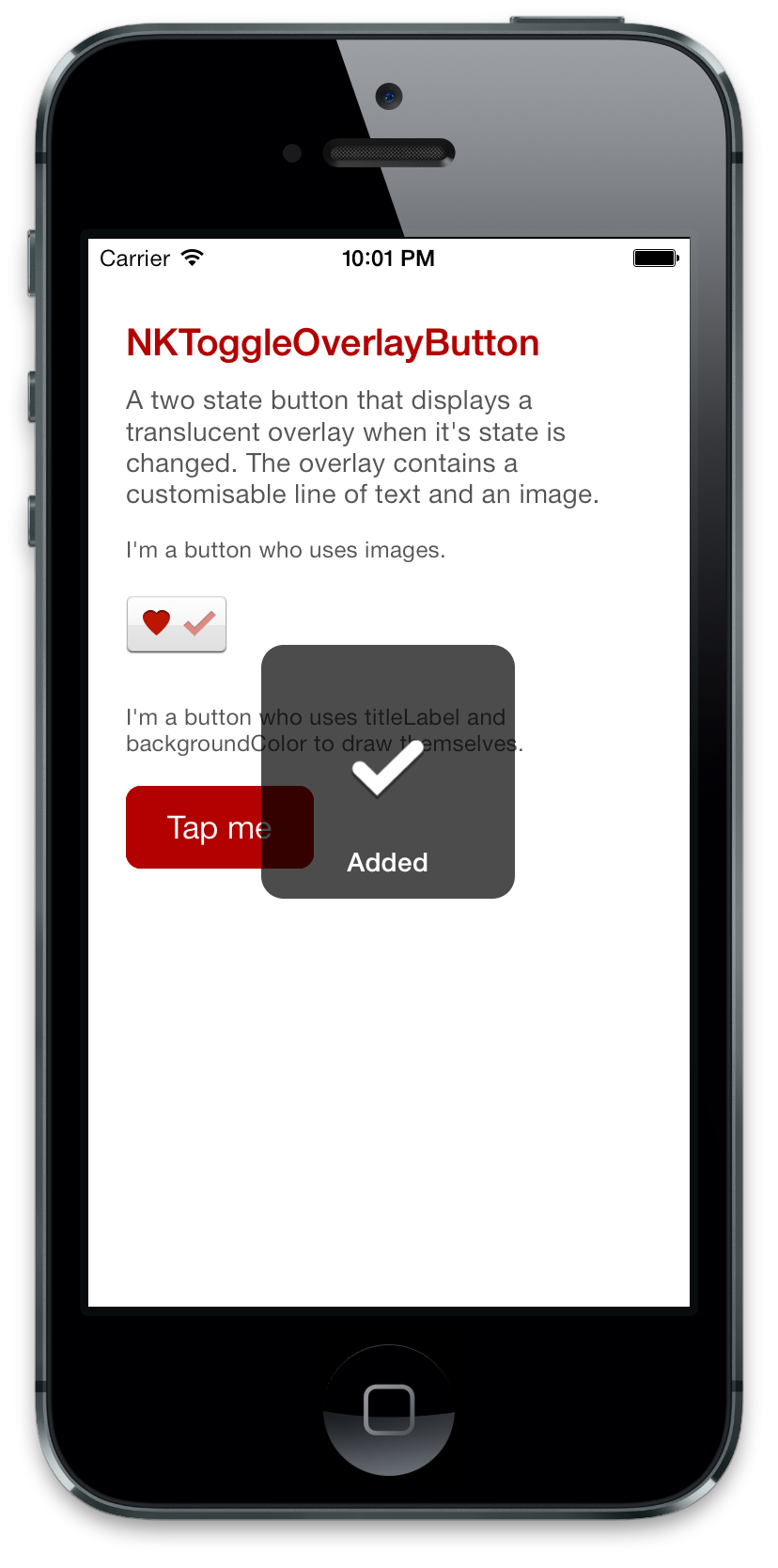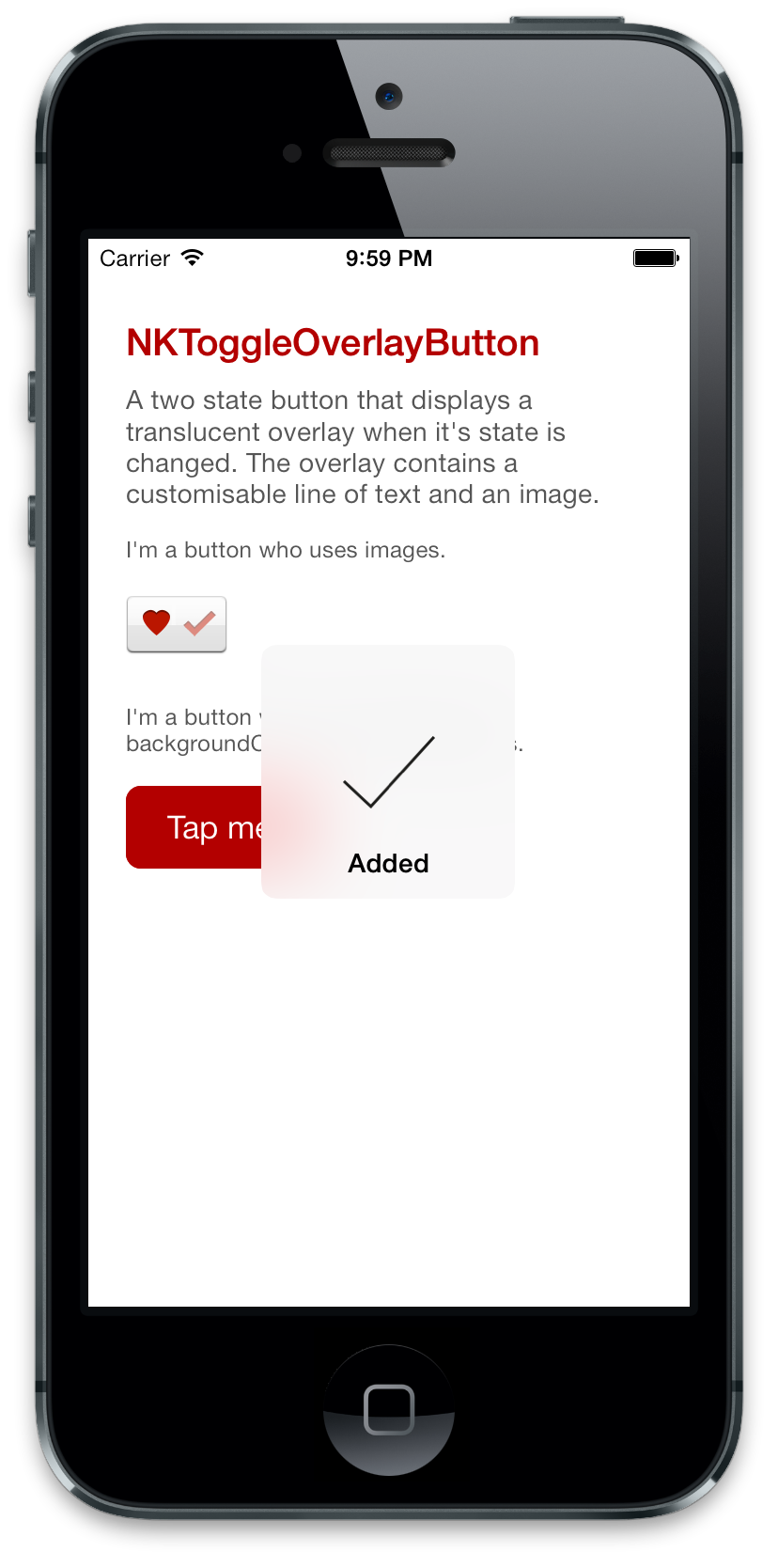I recently re-did an open source component of mine (because I needed to use it in a new project) and was amazed by how much I had learned in the couple of years since I first wrote it. The control is called NKToggleOverlayButton and is a button that toggles between an on and off state. When it toggles it displays an overlay (hence the name) with an image and a line of text. A good use is a “favourite” button.
The first and most obvious improvement was converting the code to use ARC. My rationale at the time for not using ARC was derived from Jiva DeVoe’s excellent blog article on the matter. Since then I think its reasonably safe to say most iOS projects are developed with ARC turned on, and if they aren’t then they probably should be. Seeing all those retains and releases gave me pangs of nostalgia but were also very pleasing to delete.
The second thing Past Me had done was inherit from UIView. What a fool. What he should have done is inherit from UIControl so that the target-action pattern can be used. Shiny new v2.0 duly does, and will inform any registered targets (added using addTarget:action:forControlEvents:) of any touch up/down events, as well as UIControlEventValueChanged (used when the state of the button is toggled on/off). Previously behaviour was added to the control using either a pair of blocks, or a custom delegate property which only had one method toggleButtonDidToggle:. Another bonus UIControl gives you is the selected property, which supercedes the custom isOn property from NKToggleOverlayButton v1.0. I also added a public method setSelected:animated: for programmatically toggling the button. This makes for a much cleaner, more familiar public API than the custom delegate that v1 had (which has now been removed).
Speaking of public APIs, doxygen style comments have now been added to the header file. This means that you can ⌥-click (a.k.a Alt-click or option-click) on a method in Xcode and see a delightful little popup with all the info you need.

The look and feel of the control has been updated for iOS7. Previously the overlay was black and translucent, with white text. This felt nice in iOS6 and below but feels outdated in iOS7. Now the overlay is a nice frosted blurry background with black text. This feels more native and matches system controls like the volume changer.


Finally the code got a big ol’ hit with the refactor stick. Smaller methods, more code reuse, more easily readable code. All in all I’m very happy with v2.0, and very happy with the improvements I’ve personally made over the last 2 years.
Check it out and let me know what you think (contact details below)